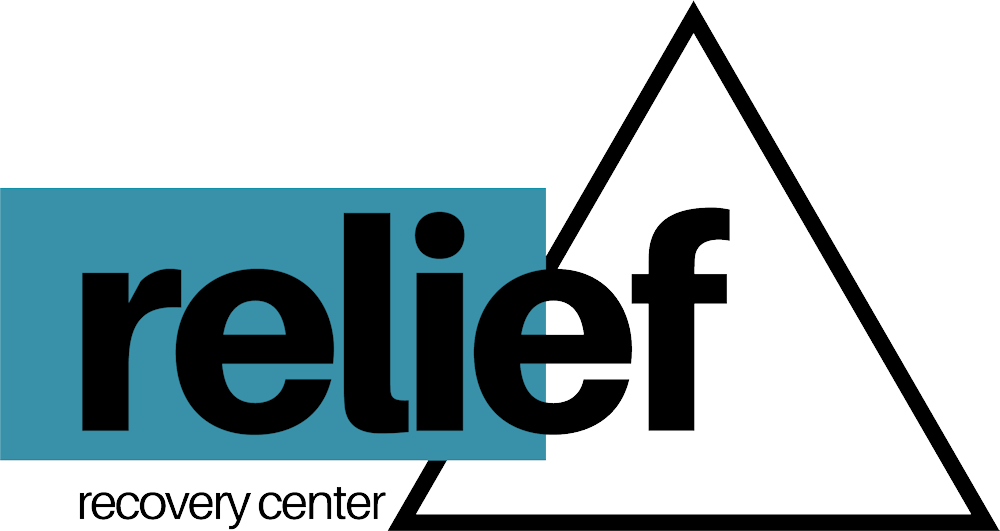Your recovery is priceless. Uncover affordable rehab options that can accommodate any budget, ensuring everyone has access to the care they need.
If you’re considering seeking help for drug or alcohol addiction, the cost of rehab should never prevent you from finding the right kind of treatment. You’ve likely wondered, “How much is rehab?” This question can be difficult to answer definitively as costs vary depending on numerous factors. Nevertheless, there are several ways to manage these expenses based on your particular situation.
How Much Does It Cost to Go to Rehab?
Treatment costs differ significantly and are influenced by various personal and provider factors. The types and durations of services you require play a significant role in determining your treatment cost. These factors depend largely on your addiction history, the type of drug(s) you use, your insurance coverage, whether your rehab facility is in-network, and other variables.
Rehabilitation programs range from highly intensive to minimally intensive. More intensive treatments or care levels usually cost more than less intensive services or lower care levels. However, many insurance policies cover even the highest levels of addiction treatment, depending on your facility and policy.
Intensive to Least Intensive Treatment Options and Associated Costs
Drug Detox Programs
Detox, often simply referred to as detox, is the first step in the substance abuse treatment process for many people. During detox, medical professionals safely help individuals clear drugs or alcohol from their body, which can help manage the symptoms of withdrawal. It’s important to note that detox alone does not address the psychological, social, and behavioral problems associated with addiction, but it does set the stage for effective drug addiction treatment.
Outpatient detox programs, where patients live at home but come to the treatment center for care, tend to be less expensive, with costs ranging from around $250 to $800 per day. The cost can vary depending on factors like the type of substance used, severity of addiction, and presence of co-occurring disorders.
Inpatient detox programs, where patients stay at the facility around the clock during detox, generally include the cost of detox in the total price of the program. The higher cost of inpatient detox can be attributed to the round-the-clock medical care and supervision provided, along with room and board.
Inpatient Rehabilitation Programs
Inpatient rehab involves residential treatment where patients live at the facility 24/7 and receive care from mental health and addiction professionals. While this type of treatment is less medically intensive than detox, it provides a structured environment free from distractions and triggers, allowing patients to focus entirely on their recovery.
Inpatient rehab programs offer a range of services including individual and group therapy, medical services, and recreational activities. The costs can vary greatly, ranging from $5,000 to $80,000, based on factors like the facility’s location, the duration of the program, the types of services and amenities provided (such as private rooms, gourmet meals, or specialized therapies), and the level of care needed by the patient.
Outpatient Rehab
This type of rehab is a less restrictive and more affordable option for substance abuse treatment. Patients in outpatient rehab live at home and attend treatment sessions at the facility. This allows for more flexibility and lets patients maintain their work, school, or family responsibilities during treatment.
Outpatient rehab programs can offer similar therapies as inpatient ones, such as individual counseling, group therapy, family therapy, and educational programs. The frequency and duration of sessions can vary based on the individual’s needs, but on average, outpatient treatment can range from $1,000 to $10,000 for three months.
Medication-Assisted Treatment (MAT)
MAT is used as a part of the overall treatment plan for substance use disorders. It combines behavioral therapy with medications to manage cravings, reduce the risk of relapse, or treat co-occurring mental health conditions.
MAT involves using FDA-approved prescription drugs such as methadone, buprenorphine, and naltrexone for opioid addiction, or disulfiram, acamprosate, and naltrexone for alcohol addiction. The cost of these medications can vary greatly, from a few dollars per day to several thousand dollars per year, depending on the specific drug used, dosage, and length of treatment. It’s important to note that insurance plans often cover some or all of the costs of these medications.
Factors Impacting the Cost of Rehab
The cost of rehab is primarily determined by the following factors:
Length of Stay and Range of Services Provided
The duration of the treatment program significantly affects its cost. Typically, longer stays naturally lead to a higher overall cost. This is due to the ongoing costs of medical care, therapy, accommodation, meals, and other services provided by the center. For instance, a 30-day treatment program will be less expensive than a 90-day or 6-month program. Additionally, the range of services provided also impacts the cost. A program that includes a variety of therapies, medical services, educational programs, and holistic treatments will generally be more expensive than a basic program offering fewer services.
Intensity of Services Rendered
The intensity or level of care required can also influence the price of rehab. Programs that offer extensive medical care, intensive therapy, and around-the-clock supervision are usually more costly. This might include cases where the patient requires a medically supervised detox, has a severe addiction, or has co-occurring mental health conditions that need treatment. Conversely, less intensive programs such as outpatient rehab or sober living homes typically cost less.
Location of the Treatment Facility:
The geographic location of the treatment center can significantly impact its cost. Inpatient programs in states or areas with a higher cost of living tend to be more expensive. This is because the cost of utilities, staffing, food, and other operating expenses in these areas is higher. Additionally, luxury or destination rehab facilities that offer scenic views or are located in desirable locations like the beach or mountains typically charge premium rates.
Specific Client Characteristics
The unique needs and characteristics of the individual also play a role in determining the cost of rehab. Individuals who need special accommodations or care usually pay more. For example, if the person requires a private room, special dietary needs, interpreter services, or has specific physical health needs, the cost will generally be higher. Some programs also offer specialized services for specific populations such as veterans, LGBTQ+ individuals, or adolescents, which might have an impact on the cost.
Amenities
The services and amenities offered by the treatment facility also come with a cost. Higher-end rehab centers often provide a range of amenities such as private rooms, gourmet food, fitness facilities, yoga or meditation classes, recreational activities, and more. These additional features can greatly increase the cost of the program. Conversely, more basic or bare-bones facilities that provide fewer amenities typically charge less. It’s important to remember, however, that while these amenities can make the treatment experience more comfortable, they aren’t a substitute for quality, evidence-based treatment.
The Cost of Drug Addiction vs. the Cost of Rehab
The cost of substance abuse and addiction can have devastating effects on all aspects of your life. The overall monetary cost of drug and alcohol abuse in the United States exceeds $600 billion a year. Meanwhile, individual addiction costs, whether for alcohol, cocaine, or heroin, can tally tens of thousands of dollars annually.
On the other hand, treatment for substance abuse averages approximately $1,583 per year per person, which is a fraction of the average annual cost of substance abuse, estimated to be around $11,487.
Affording Rehab
If you’re contemplating rehab for drug or alcohol addiction, don’t let treatment costs stop you. Your out-of-pocket costs can be significantly reduced or eliminated through insurance coverage, state-funded programs, provider-offered loans and payment plans, scholarships, and sliding-fee scales for those in need of financial assistance.
Single Case Agreements, Payment Plans, and Cash Pays
As discussed, the cost of rehab can vary greatly, but there are a multitude of ways to pay for it that can make it more accessible and affordable.
One of these methods is a single case agreement (SCA). An SCA is a contract between a health insurance company and an out-of-network provider for a specific patient. This type of agreement can sometimes be negotiated for addiction treatment services. They are useful if the patient wants to use a specific out-of-network rehab center, or if there are no in-network options available. It’s important to remember that negotiating an SCA can be complex, and usually requires a significant amount of communication and documentation between the patient, provider, and insurance company.
Moreover, some rehab facilities also offer payment plans and cash pay options. This can ease the financial burden by spreading out payments over time, making the cost more manageable. If you are considering this option, be sure to talk with the treatment center’s financial counselor to understand the terms of the payment plan.
In addition, rehab centers may offer a discounted rate for individuals who choose to pay for their treatment in cash upfront, often known as cash pays. This can sometimes result in substantial savings compared to the billed cost of treatment, although it requires the ability to pay a substantial sum upfront.
Insurance Plans and Their Role in Rehab Costs
Insurance plays a significant role in covering rehab costs. In the United States, thanks to the Mental Health Parity and Addiction Equity Act (MHPAEA), health insurers and group health plans are required to provide the same level of benefits for mental and/or substance use treatment and services that they do for medical/surgical care.
Therefore, most insurance plans cover some form of addiction treatment. However, the exact coverage varies from policy to policy, so it’s essential to check with your insurance provider about what types of treatments are covered, and to what extent. Some insurance policies may cover only certain types of treatments (e.g., inpatient rehab but not outpatient services) or may cover only a portion of the treatment costs, leaving the patient responsible for the remainder.
While insurance can greatly help reduce the out-of-pocket costs of rehab, it’s also important to remember that you might still have costs to pay even with insurance. These can include copays, deductibles, and costs for treatments not covered by your plan.
Remember, regardless of your financial situation, there are ways to access the help you need. From single case agreements to payment plans, cash pays, and insurance coverage, the path to recovery can be more affordable than you think. Don’t let the potential cost deter you from seeking the help you or your loved one need – the value of a healthier, addiction-free life is truly priceless.
The Average Cost of Rehab
Due to the personal nature of addiction, rehab costs vary depending on the level of treatment, length of stay, desired services, amenities, and more. Inpatient rehab facilities typically cost between $10,000 and $30,000 on average for a 30-day program. These costs vary according to the treatment center and the extent to which insurance can offset some of the rehab costs.
Is Rehab Worth It?
Yes, rehab is worth it. While treatment can be expensive, it leads to reduced drug use and related costs. Beyond monetary savings, rehab can help repair interpersonal relationships, improve work productivity, and decrease drug- or alcohol-related accidents and legal issues. Thus, the benefits of treatment are not only financial but also significantly improve your overall quality of life and well-being.
If you’re unsure about your insurance coverage for rehab programs or don’t know where to start, Relief Recovery Center is here to help. Our team is well-versed in navigating the complexity of insurance policies and can help determine your coverage for our various treatment programs. Remember, your path to recovery shouldn’t be halted by financial obstacles. We’re committed to assisting you in finding the most suitable treatment program within your financial capability.
To verify your insurance benefits or get more information about the cost of treatment, reach out to Relief Recovery Center today. We’re available to discuss your options, answer any questions you may have, and guide you on your path to recovery. Don’t let the fear of costs stop you from taking this crucial step towards a healthier, substance-free life. Contact us now!



